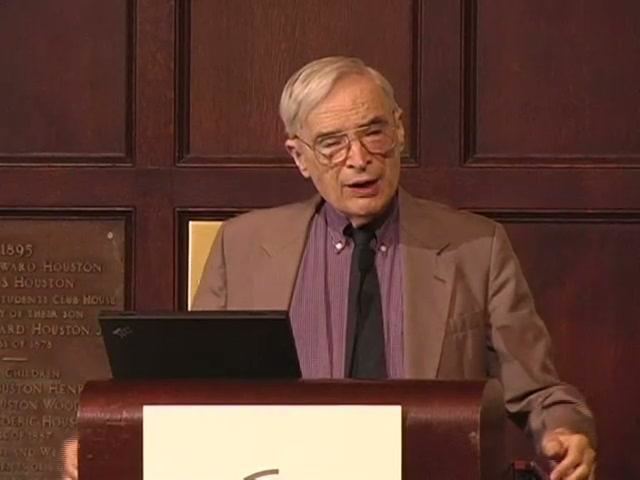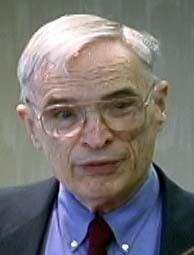Years active 1949-1990 Spouse(s) Deane Kern | Name Ian Barbour Role Scholar | |
 | ||
Occupation Author, Scholar, University Professor Nominations National Book Award for Philosophy and Religion Books When Science Meets Re, Religion in an Age of Science, Myths - Models - and Para, Ethics in an Age of Technology, Nature - Human Nature - a | ||
Conversation with Ian Barbour
Ian Graeme Barbour (October 5, 1923 – December 24, 2013), was an American scholar on the relationship between science and religion. According to the Public Broadcasting Service his mid-1960s Issues in Science and Religion "has been credited with literally creating the contemporary field of science and religion."
Contents
- Conversation with Ian Barbour
- 5 The Relationship Between Science and Religion
- Biography
- Philosophy and theology
- References

In the citation nominating Barbour for the 1999 Templeton Prize, John B. Cobb wrote "No contemporary has made a more original, deep and lasting contribution toward the needed integration of scientific and religious knowledge and values than Ian Barbour. With respect to the breadth of topics and fields brought into this integration, Barbour has no equal."

5. The Relationship Between Science and Religion
Biography

Barbour was born in Beijing, China the second of three sons of an American Episcopalian mother and a Scottish Presbyterian father. He spent his childhood in China, the United States, and England.

He received his B.Sc. in physics from Swarthmore College, his M.Sc. in physics from Duke University in 1946, and a Ph.D. in physics from the University of Chicago in 1950.
He earned a B.Div. in 1956 from Yale University's Divinity School. Barbour taught at Carleton College beginning in 1955, with an appointment as professor of religion. In the 1970s, he co-founded of the Science, Technology, and Public Policy program at Carleton, which later became the Environment and Technology Studies program. He retired in 1986 as the Winifred and Atherton Bean Professor Emeritus of Science, Technology and Society.
Barbour gave the Gifford lectures from 1989 – 1991 at the University of Aberdeen. These lectures led to the book Religion in an Age of Science. He was awarded the Templeton Prize in 1999 for Progress in Religion in recognition of his efforts to create a dialogue between the worlds of science and religion.
Barbour was married to Deane Kern from 1947 until her death in 2011. They had four children.
Barbour suffered a stroke on December 20, 2013 at his home in Northfield, Minnesota, and remained in a coma at Abbott Northwestern Hospital until his death four days later.
Philosophy and theology
In his efforts to link science and religion in Issues in Science and Religion, Barbour coined the term ‘critical realism’. This has been adopted by other scholars. He claimed the basic structure of religion is similar to that of science in some ways but also differs on some crucial points. They are part of the same spectrum in which both display subjective as well as objective features. The subjective include the theory on data, the resistance of comprehensive theories to falsification, and the absence of rules for choice among paradigms. Objective features include the presence of common data, evidence for or against a theory, and criteria which are not paradigm-dependent. The presence of subjective and objective features in both science and religion makes his thinking valuable and original. Barbour’s arguments have been developed in significant and diverse ways by a variety of scholars, including Arthur Peacocke, John Polkinghorne, Sallie McFague and Robert John Russell. His subjective / objective approach is prominent in the evolving paradigm of Religious Naturalism.
Barbour considered critical realism an alternative to the competing interpretations of scientific theories: classical or naive realism, instrumentalism, and idealism. A critical realist perspective sees scientific theories yielding partial, revisable, abstract, but referential knowledge of the world that can be expressed through metaphors and models.
During the 1970s Barbour presented a program of interdisciplinary courses that dealt with ethical issues in the applications of science, exploring the social and environmental consequences of a variety of technologies. In 2000 in When Science Meets Religion (2000) he used a fourfold typology (Conflict, Independence, Dialogue, Integration) to relate religion and science that he had developed in his earlier writings. In his works, Barbour writes from a Christian perspective.
Barbour compared methods of inquiry in science and religion, and has explored the theological implications of the Big Bang theory, quantum physics, evolutionary biology and genetics. He also has lectured widely on ethical issues in such fields as technology policy, energy, agriculture, computers and cloning.
Forrest Clingerman ties Barbour to the Religious Naturalism movement via his theology of nature. His subjective/objective approach to religious is prominent in this evolving paradigm. Michael Dowd calls Barbour the granddaddy of the evolutionary Christianity movement.
In his acceptance speech for the 1999 Templeton Prize, Barbour spoke about the need to break down barriers, using cloning as an example of science's ability to say what is possible and of religion to reflect on what is desirable.
